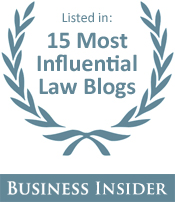Whistleblower Law Blog
TELG Principals Publish Article in California Lawyer
The Employment Law Group® principal attorneys David Scher and R. Scott Oswald wrote an article entitled “Blowing the Whistle,” which appeared in the October 2011 edition of California Lawyer. In the article, Scher and Oswald discuss the California Whistleblower Protection Act (CWPA), referring to it as a “robust law that…has limitations and administrative hurdles.” They explain how the CWPA is widely respected, but cluttered with restrictive policies. Although the CWPA does provide robust protection for employees and whistleblowers, its technical requirements can make the filing of a claim somewhat complicated. By far, the biggest restriction is the fact that CWPA only covers those employed by the state and not those employed by the local government.
Under the CWPA, a state employee must file an administrative claim with the State Personnel Board (SPB), which would then investigate the claim. For state university employees, they must file their claims either to their supervisor or to an internal staff member before they take the matter to a civil court.
If the claimant is seeking damages, the CWPA stipulates that after the State Personnel Board investigates, the employee must bring the matter to the Victim Compensation and Government Claims Board. The board has 45 days to respond to a claim and if it the board rejects the claim, the claimant (employee) has six months to file a lawsuit. If the board denies the claim because there was no timely response, the claimant has two years to bring the issue before a court.
Oswald and Scher recommend that employees and whistleblowers file their complaints with both the SPB and the claims board. They also recommend that due to the complexities involved, only attorneys with strong knowledge of the administrative requirements of the CWPA handle these cases.
Tagged: California Whistleblower Protection Act, Whistleblower Laws (State/Local)



